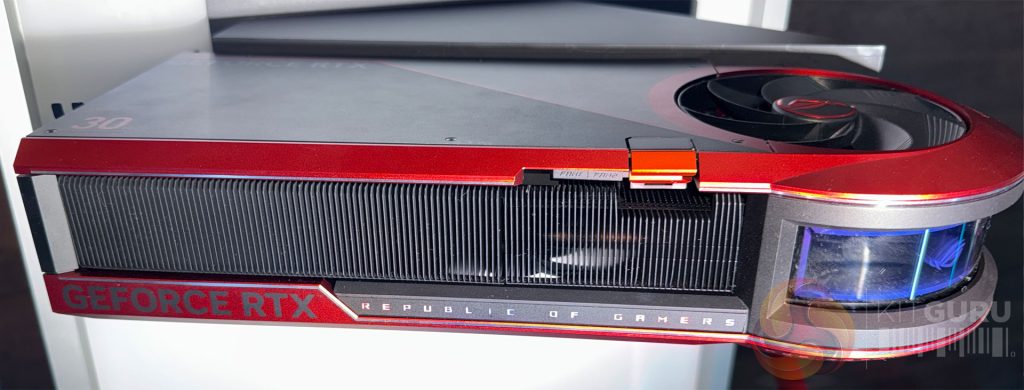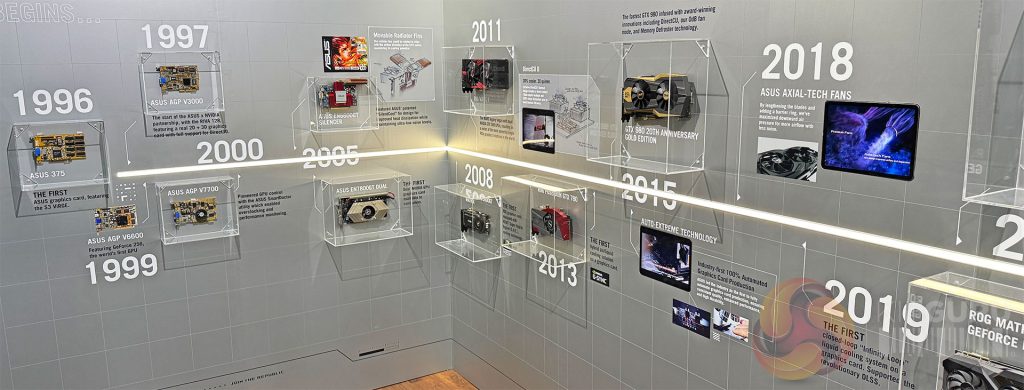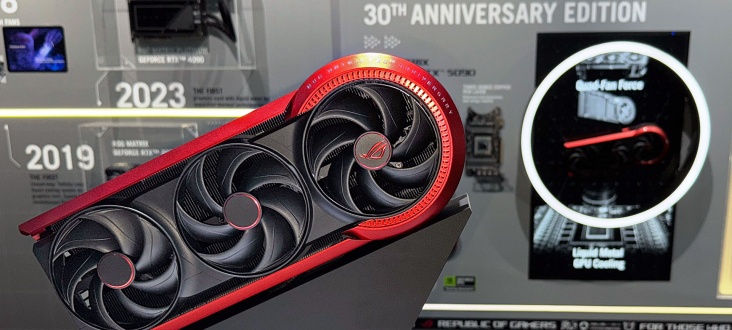At GamesCom 2025 in Cologne, ASUS presented KitGuru with the ROG Matrix RTX 5090 30th Anniversary Edition graphics card, and it’s a bit of a monster. The card is currently at the engineering sample stage, but it already highlights the challenges of designing hardware at this scale. There’s no real issue if you want to build it into a ‘lay flat chassis’ on your desktop, but moving a PC around the country, by courier, will take some doing.
ASUS engineers told KitGuru that they are confident the card’s final weight will be under 3.5 kg. For context, NVIDIA’s own RTX 5090 Founders Edition weighs close to 1.8 kg. Given that a standard PCI Express slot provides only shallow physical support, ASUS will need to incorporate some form of internal bracing or expect system builders to find additional reinforcement. Moving a system fitted with one of these cards without damage would otherwise be difficult. We picked this card up with the muscle-memory of ‘regular cards’. You rapidly need to re-think your grip.
Power and Cooling
The Anniversary Edition looks to have a quoted peak power draw close to 800 W, significantly higher than the RTX 5090 Founders Edition’s official 575 W rating. Cooling is handled with an air-based design that uses liquid metal, large copper heatsinks, and a four-fan configuration combining three front fans with a rear blower.
Power delivery is provided by dual 12V-2×6 connectors, along with ASUS’s Back-to-the-Future (BTF) connector, designed to improve cable routing in compatible motherboards.

Historical Contrast
The 30th Anniversary badge refers back to ASUS’s first graphics card, the ASUS 375, launched in 1996 with the S3 ViRGE/DX chipset. That card was physically small, required minimal cooling, and consumed only a handful of watts through the motherboard slot.
By comparison, the new ROG Matrix RTX 5090 pushes modern power and thermal limits, with a footprint and weight that far exceed standard designs. The difference illustrates how far discrete graphics cards have developed over the past three decades.

Availability
ASUS has confirmed that the Matrix Anniversary Edition will be a limited-run product, with only 1,000 units planned worldwide.
The final pricing has yet to be decided, but we expect it to be north of £3,000 for the 1,000 enthusiasts lucky enough to be able to buy one.
Thirty Years Back – and Thirty Years Forward
Looking back, the contrast is stark. From 1996, ASUS’s first card (the 375 with an S3 ViRGE chipset), was one of a first generation of cards to provide any kind of hardware acceleration for your graphics. It certainly would not ‘understand’ modern games. Even with the most generous assumptions, it would need minutes to render a single 4K frame, and in practice it could not attempt the task at all.
Projecting forward another thirty years offers an interesting perspective. By 2056, today’s ROG Matrix RTX 5090 Anniversary Edition may find itself in the same position, struggling even to interpret the rendering environments of the future (assuming desktop graphics is still a thing). If development continues at its present pace, this RTX 5090 could take minutes to process a single frame – assuming it has the capability to render one at all.
You can find out more about the upcoming 30th Anniversary card here.
KitGuru says: For now, the ASUS ROG Matrix RTX 5090 30th Anniversary Edition promises to be one of the biggest, fastest and heaviest graphics cards on the planet – and it comes in ‘Hot Rod Red’.
Become a Patron!
